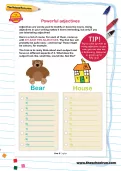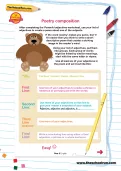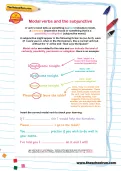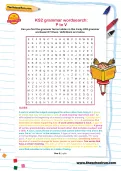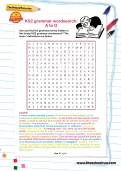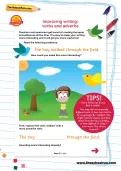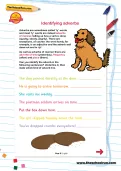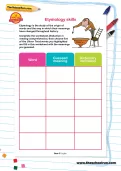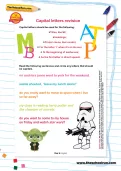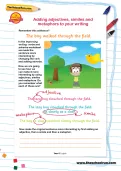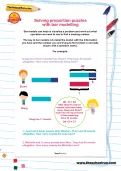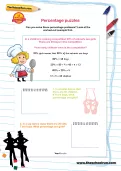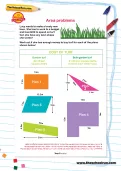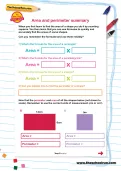Adjectives are words use to modify or describe nouns. Using adjectives in your writing makes it more interesting, but only if you use interesting adjectives! Here is a list of nouns. For each of them, come up with AT LEAST TEN ADJECTIVES. The first few will probably be quite easy – and boring! These might be colours, for example. The trick is to really think about each subject and focus on different aspects of it. What does the subject look like, smell like, sound like, feel like?
or
Register to add to your saved resources
Already a subscriber? to view this content.
If the word ‘poetry’ makes you panic, don’t! It’s easier than you think to write a short descriptive poem that creates a striking image in the reader’s mind. Why not have a go?
or
Register to add to your saved resources
Already a subscriber? to view this content.
After reading this Robert Louis Stevenson poem, answer the questions.
or
Register to add to your saved resources
Already a subscriber? to view this content.
Modal verbs are related to this idea and can indicate the level of certainty, possibility, permission or obligation. Insert the correct modal verb into these sentences.
or
Register to add to your saved resources
Already a subscriber? to view this content.
Can you find the grammar terms hidden in this tricky KS2 grammar wordsearch?
or
Register to add to your saved resources
Can you find the grammar terms hidden in this tricky KS2 grammar wordsearch?
or
Register to add to your saved resources
Skilled writers often use a technique we might call ‘show not tell’. They use the actions of characters, or the situation they find themselves in, to tell us more about them, rather than spelling their meaning out and explaining it to us directly. Can you use your inference skills on this passage?
or
Register to add to your saved resources
Already a subscriber? to view this content.
Teachers and examiners get bored of reading the same old sentences all the time. It’s easy to make your writing more interesting and it will get you more marks too! Try and make the sentence 'The boy walked through the field' more interesting by using powerful verbs and adverbs.
or
Register to add to your saved resources
Already a subscriber? to view this content.
As well as adverbs of manner there are adverbs of time (yesterday), frequency (often) and place (there). Can you identify the adverb in the following sentences? Underline it, then state which kind of adverb it is.
or
Register to add to your saved resources
Already a subscriber? to view this content.
Etymology is the study of the origin of words and the way in which their meanings have changed throughout history. Complete the worksheet Deduction in reading comprehension, then choose five of the Oliver Twist words you highlighted and fill in this worksheet with the meanings
you guessed.
or
Register to add to your saved resources
Already a subscriber? to view this content.
The following extract is from the second chapter of the novel Oliver Twist by Charles Dickens. Oliver has recently gone to live in a workhouse. Firstly highlight any words you don't understand and see if you can work out what they mean. Then summarise what is happening in each paragraph.
or
Register to add to your saved resources
Already a subscriber? to view this content.
Do you know all the occasions when capital letters should be used? Read the following sentences and circle any letters that should be capitals.
or
Register to add to your saved resources
Already a subscriber? to view this content.
Apostrophes are used to show possession (belonging) and omission (missing letters). To show possession for singular nouns, the apostrophe goes before the ‘s’. To show possession for plural nouns, the apostrophe goes after the ‘s,’ if the plural is formed using an ‘s.’But to show possession for irregular plural nouns (women, men, children, mice), the apostrophe goes before the ‘s’. Read the following sentences and circle the correct word.
or
Register to add to your saved resources
Already a subscriber? to view this content.
The boy walked through the field.... a bit of a boring sentence, yes? Can you make it more interesting by first adding an adjective, then a simile and then a metaphor.
or
Register to add to your saved resources
Already a subscriber? to view this content.
Can you spot the difference between an active and passive verb? Read the following passage and underline all the active verbs, then circle all the passive verbs.
or
Register to add to your saved resources
Already a subscriber? to view this content.
Bar models can help us visualise a problem and work out what operation we need to use to find a missing number. The key to bar models is to label the model with the information you know and the number you are trying to find (which is normally shown with a question mark). Can you use bar models to answer these questions?
or
Register to add to your saved resources
Already a subscriber? to view this content.
In algebra we use letters to represent numbers that we don’t know the value of. A string of numbers and letters joined together by mathematical operations such as + and - is called an algebraic expression. Try the following algebra problems.
or
Register to add to your saved resources
Already a subscriber? to view this content.
Can you solve these tricky percentage problems?
or
Register to add to your saved resources
Already a subscriber? to view this content.
Lucy wants to make a lovely new lawn. She has to work to a budget and has £220 to spend on turf. Can she have any lawn shape she wants? Work out if she has enough money to buy turf for each of the plans shown below!
or
Register to add to your saved resources
Already a subscriber? to view this content.
When you first learn to find the area of a shape you do it by counting squares. You then learn that you can use formulae to quickly and accurately find the areas of some shapes. Can you remember the formulae and use them reliably? Now find the perimeter and area of all the shapes below (not drawn to scale). Remember to use the correct units of measurement (cm or cm2).
or
Register to add to your saved resources
Already a subscriber? to view this content.
